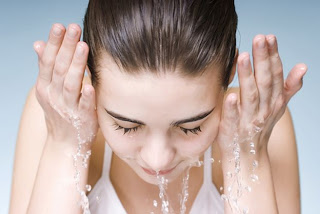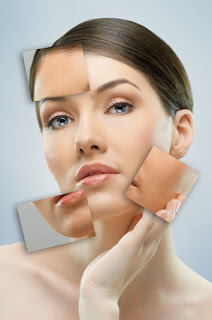Despite so much of efforts acne scars turned out to be extremely difficult to treat. In the past dermatologists have used several methods such as excision, punch grafts, and chemical peels as treatments. But we all know that the results of these therapies have not turned out to be fruitful and theses therapies have always given room to additional scarring to occur. Over the past several years, dermatologists have been working with laser treatment acne which the results now show is turning to be extremely beneficial and giving excellent results.
laser treatment acne
The Best Acne Treatment for Your Skin Type
Whether you like it or not, acne does come with some
embarrassment and is often in need of the best acne treatment. There are
many different ways to treat this problem and this include the use of
products on the market.
To contrast the best acne treatment, the first thing you need to do is to look at what not to do. The wrong treatment can make things worse and even lead to infections. This is a matter that should be addressed with the best acne treatment no matter what your age.
Some mistakes that people do make are the following with a solution:
To contrast the best acne treatment, the first thing you need to do is to look at what not to do. The wrong treatment can make things worse and even lead to infections. This is a matter that should be addressed with the best acne treatment no matter what your age.
Some mistakes that people do make are the following with a solution:
What Are The Causes Of Acne?
Acne is a very common dermatological condition which can be quite
disfiguring and have longer-term effects. It tends to affect adolescent
people but is by no means limited to them. What are the causes of acne?
Find the answers in our report, learn about the underlying causes and
read about some acne myths that we debunk, too.
A Dermatological Disaster
The basis for an acne outbreak lies in the blockage of hair follicles in the skin. The follicles and associated sebaceous glands normally produce a natural protein called keratin. They also shed dead skin cells from the follicle lining, and a natural oil called sebum. In acne, keratin and sebum are produced to excess. The follicles become blocked by keratin, sebum and dead skin cells. The blockages lead to the symptoms of acne.
Once the follicles (or pores) get blocked, a specific bacterium called Propionibacterium which is normally harmless infects the blocked ducts. The result is inflammation and damage to the skin and underlying tissue. The bacterium (usually abbreviated to P. acnes) is anaerobic. This means that it does not use oxygen to survive. In fact, it does best in the absence of oxygen so it's perfectly adapted to cause maximum trouble in blocked pores.
A Dermatological Disaster
The basis for an acne outbreak lies in the blockage of hair follicles in the skin. The follicles and associated sebaceous glands normally produce a natural protein called keratin. They also shed dead skin cells from the follicle lining, and a natural oil called sebum. In acne, keratin and sebum are produced to excess. The follicles become blocked by keratin, sebum and dead skin cells. The blockages lead to the symptoms of acne.
Once the follicles (or pores) get blocked, a specific bacterium called Propionibacterium which is normally harmless infects the blocked ducts. The result is inflammation and damage to the skin and underlying tissue. The bacterium (usually abbreviated to P. acnes) is anaerobic. This means that it does not use oxygen to survive. In fact, it does best in the absence of oxygen so it's perfectly adapted to cause maximum trouble in blocked pores.
What Is Acne?
Acne is a common skin disease that results when pores get blocked and bacteria form inside them. It comes in a variety of familiar forms and affects nearly everyone at some stage, particularly in their teen years. The inflamed, red bumps that sometimes form can be painful, and even painless white pimples are unsightly.
In the surface of the skin are pores, tiny openings called a hair follicle. Deeper inside the pore, near the base of the follicle, there are sebaceous glands that produce sebum, a natural type of oil. That oil helps keep the skin flexible and protected.
In the surface of the skin are pores, tiny openings called a hair follicle. Deeper inside the pore, near the base of the follicle, there are sebaceous glands that produce sebum, a natural type of oil. That oil helps keep the skin flexible and protected.
Subscribe to:
Posts (Atom)




